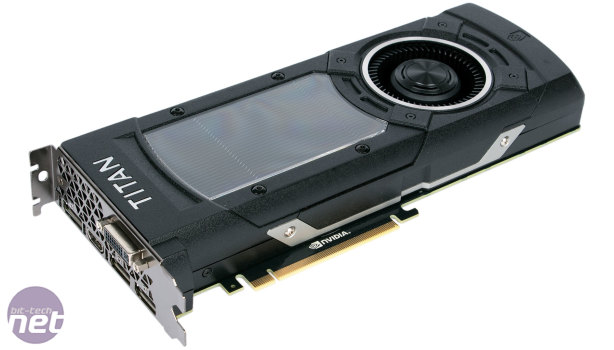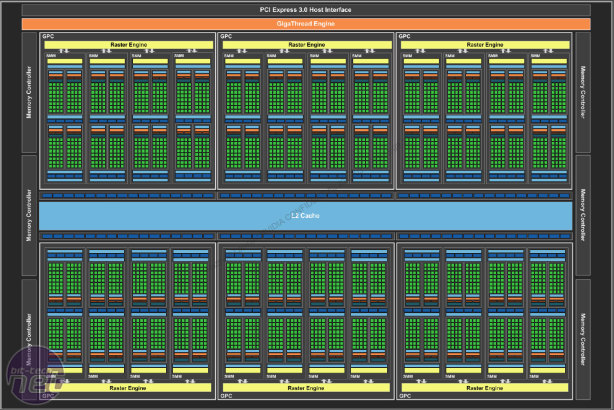
Nvidia GeForce GTX Titan X 12GB Review
Manufacturer: NvidiaUK price (as reviewed): MSRP £879.99
US price (as reviewed): MSRP $999
Today at the GPU Technology Conference (GTC), Nvidia is officially launching GTX Titan X, its fastest Maxwell product to date. When details of it first began to emerge, some speculated that it would be a dual GPU card like GTX Titan Z. However, GTX Titan X is a single GPU card, and that GPU is GM200, which takes over from GM204 (used in the GTX 980) as the new world's fastest GPU for gaming.
All of Nvidia's main board partners should be stocking Titan X, and buyers should be able to pre-order the card tomorrow from 2pm GMT. Like previous Titan family cards, it will come as the reference design only – some partners may ship their own coolers for it, but it will need to be included separately and installed manually. Nvidia is also working to make sure that compatible waterblocks are available at or shortly after launch.
In terms of features, Titan X is DirectX 12 compatible with Feature Level 12.1. Nvidia's latest visual technologies are also of course supported, including VXGI, MFAA and DSR, which are all covered in our GTX 980 review. The most exciting of these is VXGI, a method of rendering dynamic lighting in scenes in real time on the GPU, and this has now been integrated into a branch of Unreal Engine 4, which was recently made free to developers worldwide.
Nvidia is also working on virtual reality technologies which Titan X will support. These include Asynchronous Time Warp, whereby a scene is “shifted” in line with the latest information from a VR headset's tracking sensor right before being displayed, rather than having the GPU re-render it, thus reducing the perceived latency between head movements and what's shown. There's also VR SLI, where one card is assigned to each eye in the VR headset. Both VR SLI and Asynchronous Time Warp can be used together, with an alpha driver enabling this functionality now available to select developers and partners.
Getting to the nitty gritty, GM200 is a fully enabled 28nm Maxwell part with a 601mm2 die size, 8 billion transistors and 3,072 CUDA cores. This is 50 percent more cores than in the GTX 980's GM204 GPU. In fact, multiply a GM204 by 1.5 and you effectively arrive at the GM200 – the highly parallel design of Maxwell makes scaling like this relatively easy. There are now two more GPCs (six total) with four SMMs a piece, and this also takes the texture unit count to 192. Memory controllers too are up from four to six, making for a 384-bit interface. Since each controller is tied to 16 ROPs and 512KB of L2 cache, GTX Titan X has a whopping 96 ROPs and 3MB of L2 cache. Remember, this is a fully enabled part, so there will be no fiasco about partially disabled ROP/L2 cache partitions as there was with the GTX 970. The GPU has a base clock of 1GHz, with a rated boost clock of 1,075MHz, though as ever the actual boost speed will vary depending on the workload, thermal environment and so on.
| Nvidia GeForce GTX Titan X | Nvidia GeForce GTX 980 4GB | Nvidia GeForce GTX Titan Black 6GB | Nvidia GeForce GTX 780 Ti 3GB | Nvidia GeForce GTX Titan 6GB | |
| GPU | |||||
| Architecture | Maxwell | Maxwell | Kepler | Kepler | Kepler |
| Codename | GM200 | GM204 | GK110 | GK110 | GK110 |
| Base Clock | 1,000MHz | 1,126MHz | 889MHz | 876MHz | 836MHz |
| Boost Clock | 1,075MHz | 1,216MHz | 980MHz | 928MHz | 876MHz |
| Stream Processors | 3,072 | 2,048 | 2,880 | 2,880 | 2,688 |
| Layout | 6 GPCs, 24 SMMs | 4 GPCs, 16 SMMs | 5 GPCs, 15 SMXs | 5 GPCs, 15 SMXs | 5 GPCs, 14 SMXs |
| Rasterisers | 6 | 4 | 5 | 5 | 5 |
| Tesselation Units | 24 | 16 | 15 | 15 | 14 |
| Texture Units | 192 | 128 | 240 | 240 | 224 |
| ROPs | 96 | 64 | 48 | 48 | 48 |
| FP64 Performance | 1/32 FP32 | 1/32 FP32 | 1/3 FP32 | 1/24 FP32 | 1/3 FP32 |
| Transistors | 8 billion | 5.2 billion | 7.1 billion | 7.1 billion | 7.1 billion |
| Die Size | 601mm2 | 398mm2 | 561mm2 | 561mm2 | 561mm2 |
| Process | 28nm | 28nm | 28nm | 28nm | 28nm |
| Memory | |||||
| Amount | 12GB GDDR5 | 4GB GDDR5 | 6GB GDDR5 | 3GB GDDR5 | 6GB GDDR5 |
| Frequency | 1.75GHz (7GHz Effective) | 1.75GHz (7GHz Effective) | 1.75GHz (7GHz Effective) | 1.75GHz (7GHz Effective) | 1.5GHz (6GHz Effective) |
| Interface | 384-bit | 256-bit | 384-bit | 384-bit | 384-bit |
| Bandwidth | 336GB/sec | 224GB/sec | 336GB/sec | 336GB/sec | 288GB/sec |
| Card Specifications | |||||
| Power Connectors | 1 x 6-pin, 1 x 8-pin PCI-E | 2 x 6-pin PCI-E | 1 x 6-pin, 1 x 8-pin PCI-E | 1 x 6-pin, 1 x 8-pin PCI-E | 1 x 6-pin, 1 x 8-pin PCI-E |
| Stock Card Length | 267mm | 267mm | 267mm | 267mm | 267mm |
| TDP | 250W | 165W | 250W | 250W | 250W |
While the GPU has essentially seen a 50 percent increase over GM204, Titan X has had a threefold increase over GTX 980 when it comes to VRAM, and is thus equipped with a massive 12GB frame buffer. According to Nvidia, this was a developer driver decision, with the company hearing feedback that larger buffers are becoming more and more important, although where that leaves the GTX 980 4GB in the future remains to be seen. Still, it's higher than AMD's current largest frame buffer, which is 8GB on selected R9 290X models. The memory still runs at 7,010MHz effective, and with the wider memory bus this takes total memory bandwidth to 336.5GB/sec.
Interestingly, Nvidia is no longer offering unlocked double-precision performance, despite this being part of the Titan family. Instead, it is locked (via driver, not hardware) at 1/32 of single-precision performance, just as with the standard GTX 900 series. This means Titan X is being marketed exclusively to gamers, rather than those more interested in compute performance. By this logic, the card could have been called GTX 980 Ti instead (and priced like one too), but with GTX Titan X having so many cores and so much memory, Nvidia is leaving a large enough gap for an actual GTX 980 Ti to launch at a later date and plug the gap (in price and specs), presumably in response to or in preparation for AMD's R9 390X launch. We should say that this is all speculation on our part, but it certainly wouldn't surprise us.
One final thing worth noting is that GTX Titan X still uses Nvidia's slightly older display engine as seen in the GTX 980. As such, it does not offer full hardware-based H.265 decode like the GTX 960, though it does still support 5K resolutions and up to four 4K displays.

MSI MPG Velox 100R Chassis Review
October 14 2021 | 15:04











Want to comment? Please log in.